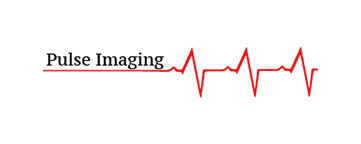GRAM STAIN
Also Known As: Gram Stain test, Gram staining, Gram’s Method.
What Is Gram Stain Test?
It is one of the laboratory tests that help identify the type of bacteria or fungi in a sample derived from the suspected site of infection. The test classifies the bacteria based on their cell wall constituents. Obtained samples are treated with special stains (crystal violet and safranin) and examined under the microscope. The bacteria that take violet color are called Gram-Positive bacteria, and those turned pink or red are called Gram-Negative bacteria.
Additional information can be collected by observing bacteria under a microscope, including the shape such as rods, spirals, and cocci (circular) and grouping of bacteria in strips, clusters, in pairs, or single, and the presence of bacteria in WBCs or RBCs. These features also help in identifying the type of bacteria. This test cannot detect viruses, but fungi (yeast and molds) can be recognized by gram staining.
What Is The Test Used For?
The gram stain test is a simple, fast, and cost-effective method of determining whether your sample contains bacteria or fungi. It also provides preliminary results on identifying general types of bacteria, which helps your healthcare practitioner with sufficient knowledge to prescribe appropriate antibiotic treatment while waiting for the results of more specific tests. The test is also performed along with culture or as a part of the culture evaluation for identifying the bacteria.
Most common examples of gram-positive bacteria include;
- Streptococcus pneumonia; is the causative agent of bacterial pneumonia.
- Staphylococcus aureus: causes skin infections, pneumonia, osteomyelitis, endocarditis, and toxic shock syndrome.
- Group a Streptococcus species: causes throat infections.
- Listeria specie: an agent for food poisoning.
- Clostridium botulinum: leads to Botulism.
- Clostridium tetanus: causes tetanus.
Common examples of gram-negative bacteria include:
- E.coli: Common cause of urinary tract infections (UTIs) and food poisoning.
- Legionella pneumoniae: Legionnaires disease and pneumonia in elders.
- Salmonella: food poisoning and typhoid fever.
- Klebsiella: Pneumonia, sepsis, wound infections.
- Neisseria gonorrhea: Gonorrhea.
- Proteus: UTIs.
- Pseudomonas specie: pneumonia, sepsis, soft tissue, and wound infections.
Fever, pain, weakness, and lethargy are some common symptoms usually present in all bacterial infections; however, each infection has its specific sign and symptoms depending upon the location and severity of the illness.
Why And When Do You Need To Get Tested?
Gram staining test broadly classifies the bacteria and help guides further identification tests and treatment options. You may need to run this test:
- If your healthcare provider suspects a bacterial cause of your illness.
- If you experience signs and symptoms of bacterial and fungal infection.
- It is also requested along with the culture of the specimen.
- Whenever the culture is positive.
This test cannot identify all sorts and species of bacteria, nor can it provide a definitive diagnosis; however, the test produces relatively quick results, which help initiate early and appropriate treatment, thus minimizing the chance of complications.
Your healthcare provider may request further specific investigations for making a definitive diagnosis, including culture and antigen-antibody tests for bacteria.
What Type Of Sample Is Required?
Your healthcare provider will collect a sample from the site of the suspected infection.
- A sterile swab is used to obtain specimens (cells, exudate, or pus) from nostrils, throat (tonsils), skin wounds, and genitals.
- A sterile container is provided to collect specimens of stool, urine, and sputum. Your healthcare provider might ask you to cough up the sputum and collect it in a container. Sputum is different from spit and saliva.
- A needle is used to draw samples of blood, joint aspirate, cerebrospinal fluid from the spinal cord, and ascitic fluid from the abdomen. Your healthcare provider then puts the sample into a sterile container and sends it to the laboratory.
The presence of WBCs in the sample provides adequacy of the sample as WBCs are frequently present at the site of infection.
Do You Need To Prepare For This Test?
You required no special preparations for performing this test.
Is There Any Risk To This Test?
There is no risk associated with swabs, sputum, and urine tests. You may experience slight pain and bruise at the site of the needle prick, but very rarely, bleeding or infections may happen at the site of the prick.
What Does The Result Mean?
The results are usually obtained within 24-48 hours and are reported as negative and positive.
A negative gram stain test suggests that your sample does not contain any bacteria or fungi, or there are not enough bacteria present in your sample to be seen under a microscope. Bacteria might still grow on culture media.
A positive gram stain test means your sample contains bacteria, so the test report will describe what is seen on the slide. This usually includes:
- Type of bacteria: whether gram-positive (purple-stained) or gram-negative (pink or red-stained)
- Shape: either circular (cocci) or rod (bacillus)
- Size, arrangement of bacteria, or relative quantity of bacteria in the sample.
- Detection of WBCs and RBCs.
- Presence of bacteria within RBCs or WBCs.
- Fungi (yeast and molds) can be identified on gram staining. Yeasts appear as a single cell on microscopy and molds as a branched structure like a tree.
Your healthcare provider will use this information along with your signs and symptoms and clinical findings to determine the causative agent of your infection and decides which treatment option will be most effective and beneficial for you.
If you have any questions regarding your test report, you must consult your healthcare provider.
Related Tests:
- AFB smear test
- Thick and thin blood smear for malaria
- Stool culture
- Blood culture
- Urine culture
Frequently ordered together
Bacterial Culture Abscess
CBC (includes Differential and Platelets)
Culture PUS
Culture Urine
White Blood Cell Count WBC Count
Urine Routine Examination Complete with RFL Culture
CULTURE BLOOD
CULTURE GENITAL
Gonorrhea Culture With Reflex
Culture Anaerobic Bacteria with Gram Stain
Chlamydia-Gonorrhea 3-Site
Chlamydia-Gonorrhea
CBC (HH-RBC-WBC-PLT)
Culture Yeast with Identification
32.00$
18.00$
20.00$
18.00$
13.00$
13.00$
34.00$
23.00$
49.00$
22.00$
170.00$
75.00$
16.00$
109.00$














